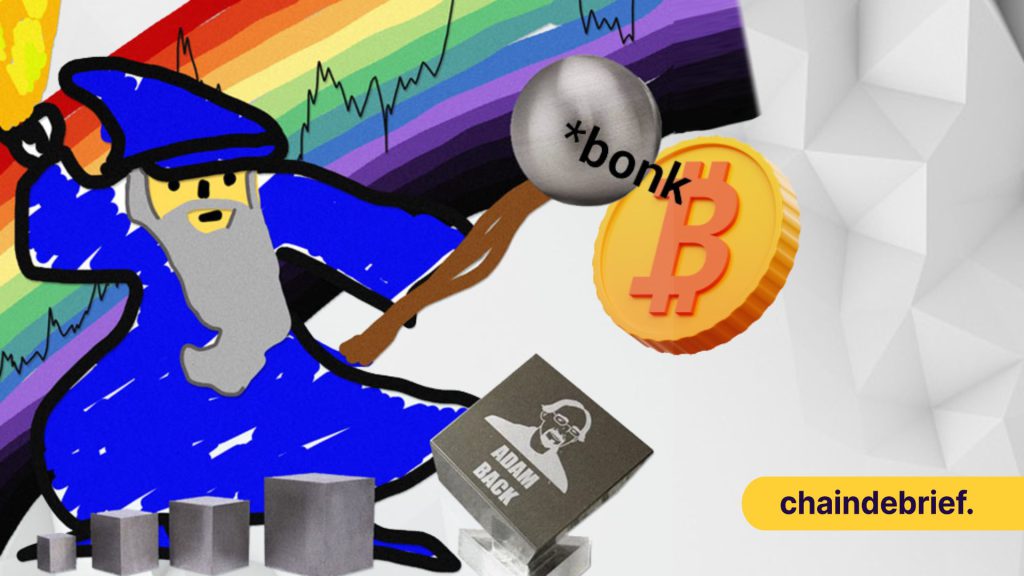Ordinals, a project founded by former Bitcoin core contributor Casey Rodarmor has enabled the unthinkable – NFTs on the Bitcoin Network.
While Non-Fungible Tokens have existed on almost every blockchain since Ethereum, the Bitcoin’ Network’s historically limited support for smart contracts has made it impossible to properly assign ownership of these NFTs.
Until now.
Also Read: GMX Up 83% In a Month But…
How Ordinals Brings NFTs to The Bitcoin Network
Due to the lack of smart contract support, Ordinals assigns each Satoshi, or the smallest unit of a Bitcoin, an ordinal number. By providing them with “Inscriptions” unique digital assets can be created and stored on the Bitcoin blockchain.
You can find a full explanation on Ordinals HERE.
Ordinals Data
— BitMEX Research (@BitMEXResearch) February 8, 2023
Up until 7 February 2023, we have identified:
* Over 13,000 Ordinals transactions
* 526MB of Bitcoin blockspace usage
* 6.77 BTC of Ordinals related spendhttps://t.co/cSNHSPIEs3
To date, 13,000 Ordinal NFTs have been identified to exist on Bitcoin, including Taproot Wizards, a project started by independent developer Udi Wertheimer.
Controversy Amongst Bitcoin Maxis
Minting NFTs on the Bitcoin blockchain is not without it’s controversies. Critics of Ordinal NFTs claim that these Non-Fungible Tokens are wastefully occupying space on the Bitcoin Network, making transactions more expensive and lengthy for the ordinary user.
First of all it is misusing the system: using a financial ledger for data storage.
— Semisol (@Semisol_Public) February 7, 2023
Second, this is being done at the expense of everyone else that needs this block space for what it is meant to be: financial transactions
Those not in favor of Ordinals claim that putting JPEGs on the network are doing so against Satoshi’s original vision while making it difficult for users of the network to transact.
“The most important thing that the Bitcoin network does is decentralize money. All other use-cases are secondary, including ordinal theory. The developers of ordinal theory understand and acknowledge this, and believe that ordinal theory helps, at least in a small way, Bitcoin’s primary mission.”
-Ordinals
While the creators or Ordinals have acknowledged that Bitcoin’s core mission should be to decentralize money, they also believe that having more on-chain activity would increase demand for block space, and therefore increase Bitcoin’s security budget.
Furthermore, innovation on the network extends Bitcoin’s use cases past simply being a “store of value” and could pave the way for narratives that are easier to understand and use.

Furthermore, Fees on the Bitcoin Blockchain have been relatively low since the implementation of the lightning network for on-chain transfers. Publishing inscription content also costs $50 per 1 million bytes.
Someone just minted the Mother Of All Ordinals 🤣
— Gigi 🇨🇵⚡ (@GuerillaV2) February 1, 2023
3.96 MB 👀 pic.twitter.com/i3kPA6JoZp
However, Ordinals do take up a sizeable amount of blockspace, due to Bitcoin’s low throughput. Bitcoin only produces 1 block every 10 minutes, with each block only having a size of 1MB.
In the last few weeks, the number of Ordinals minted have taken up roughly 526 MB of block space, which translates to a cost of 6.77 Bitcoin, or approximately $160,000.
Not The First Bitcoin NFTs
While Ordinals are the first to make mainstream headlines, there have actually been prior instances of NFTs being launched on the Bitcoin Network. To make up for it’s lack of smart contract support, however, require an alternative solution, with the final settlement being made on Bitcoin, much like the lightning network.
Examples of such NFTs include Rare Pepes by Counterparty and Stacks, which have blown up in price since the launch of Ordinals. Much like Wrapped Bitcoin, these NFTs can also be transferred to other blockchains, and have been sold on Ethereum NFT marketplaces such as OpenSea.
Also Read: A 2022 Review Of The Top 5 Coins And What We Can Expect In The Coming Year
[Editor’s Note: This article does not represent financial advice. Please do your own research before investing.]
Featured Image Credit: Chain Debrief



































